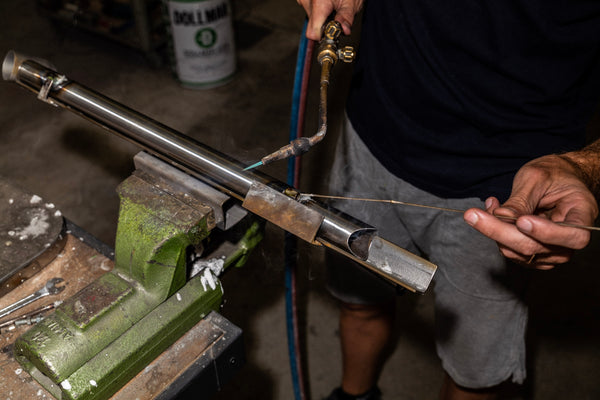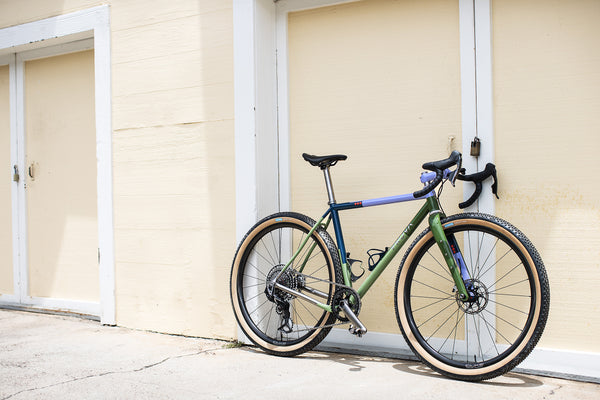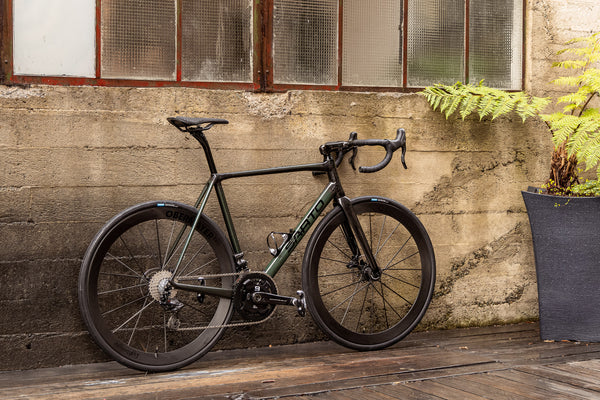BURN THE WITCH
In a sport as traditional (some may call it archaic) as road cycling, new technology is often vilified with near-religious pejoratives. Heretical, even, especially when the novel modality isn't quite perfect at the outset, and decried as marketing clothed in the sheepskin of progress. No semi-recent development has been as lambasted as the dawn of disc brakes on road bicycles. However, hydraulic road discs are now entering their second generation, and SRAM has finally brought eTap's lauded wireless electronic shifting to the new braking tech, which we've had a chance to spend more than a bit of time on in the past month. But first, a history lesson.

Disc brakes have been around nearly as long as the bicycle itself, first patented in 1902 for use on automobiles, with widespread use of the traditional caliper-on-rotor stopping system beginning in the 1960s throughout the car world, with motorcycles following shortly afterwards. Bicycles, though, remained firmly ensconced in the realm of (most) braking occurring at the rim until 1997 with the advent of the storied Hayes Mag mountain bike brake, and Trek's adoption of the system in the OEM market on its high-end mountain bikes. Finally, almost 20 years later, hydraulic disc braking has spread to the skinnier-tired crowd, but only after a few semi-false starts with Avid's mechanical brakes in the 2000s thanks to a now-defunct UCI ban on the system in cyclocross racing. One could say that the resistance to change has been strong, especially for a braking system that offers plentiful advantages over the traditional rim stopping solutions; and doubly so from corners of the cycling world that stand to benefit most from it, like racers, whose resistance is so profound that many have conjured somewhat dubious claims of injury by disc rotors. So shaky have the tales been that many journalism outfits have resorted to applying spinning discs to various materials like sausages, cardboard, and even their own flesh without serious incident.
THE CASE FOR DISCS
With the dawn of carbon wheels and accompanying awful braking relative to alloy, stopping in adverse weather conditions has become a problem with numerous band-aid fixes, and discs are a definitive cure. Speaking as a racer who recently came off a UCI 2.1 European stage race, most of us wished we'd had discs as we were hurtling down hills on narrow, twisty roads at 100 km/h. Did we get by with rim brakes? Yes - barely. But, as road races become increasingly competitive on descents as well as ascents, improved stopping in the wet becomes critical. Just as well, stopping in the dry vastly improves, thanks to the modulation capabilities proffered by a hydraulic system. In tight racing conditions, such as cornering in a criterium, a good hydraulic disc brake will allow the rider to scrub a tiny hint of speed thanks to the high modulation of the brake, instead of the relatively unpredictable amount of slowing from a cable-actuated rim brake. "But I don't race, or ride in the rain," the vast majority of riders may proclaim. A fair point. There are other upsides to the disc brake coin. One can derive full braking power from the hoods instead of having to jump into the drops for full leverage on a cable-actuated rim brake, improving safety in "oh shit" conditions, as well as any dalliances off-road. With carbon wheels, there is no longer any heat buildup at the rim, eliminating the danger of heat-induced rim delamination and failure. And, since there is no wear on the rim surface, the lifespan of that part of the wheel amplifies by many magnitudes. Besides, if one pulls the no-racing card, why don't they just ride a hybrid with flat handlebars? It's a slippery slope.


CROSS EXAMINATION
Of course, with the stagnation of road disc development imposed by the UCI's ineptly benign dictatorship, there are some hitches. The foremost for us? Weight. Disc braking systems themselves add grams (the eTap HRD groupset tacks on about 265g over its mechanical rim-braking equivalent), and everything else associated with discs typically adds tonnage as well. Disc-compatible frames, forks, and wheels all tend to add mass (both to cope with the higher brake forces, and because of the relatively young age of the tech), leading to bikes that are typically at least a half to a whole kilo heavier than they'd normally be. Of course, a few production bike brands at the pointy-end of the technology spectrum (namely Trek, Specialized, and Cannondale) have begun rolling out complete disc bikes that are coming in well under the UCI's 6.8kg weight limit, and we've built more than a few disc-braked bikes in the same vein. Next, discs add complexity - there's little denying that. Hydraulic lines are inherently more difficult to deal with than simple cables, and quick adjustments can become time-consuming, or worse, trips to the shop. Finally, our second-biggest pain point: The aesthetics. There's something jarring and inelegant about disc rotors, and up until the present moment, the braking systems themselves have done little for us in terms of elegance. Both SRAM and Shimano initially cursed the world with huge brake hoods (to make space for the brake's master cylinder), and the traditional post-mounted calipers were bulky and out of place on a road bike. Happily, both have gotten the memo with the flat mount standard, as well as slimmed-down braking hoods.


ABSOLUTION? ETAP HRD
The first of the "second-gen" hydraulic road disc groupsets to land in Marin County is SRAM's RED eTap HRD. To say it's been a long time coming is an understatement, with its rim-brake sibling's release coming a year and a half prior, perplexing first-adopters like those of us at Above Category. With the same well-loved shifting mechanics of the original eTap groupset, it brings an all-new brake design to the fore, an improvement over the previous RED hydraulic stoppers. First, the aesthetic - banished are the massive hood horns of the mechanical groupset, traded for a more subtle design visually and ergonomically reminiscent of the original Shimano 10-speed groupset, Dura-Ace 7800. Flat mount is also the standard, tucking the calipers closer to the brake mounts, offering a more rigid and minimal design. Second, enormous strides have been made to the braking feel of the SRAM stoppers. While they've always had sheer braking force, the new group's modulation and power application is right at home with the subtle movements of road riding, compared to ripping singletrack. Weight is respectable, with the hydraulic group coming in a mere 265g over the standard mechanical setup.


As soon as the group arrived, we quickly installed it on a shiny new Baum Orbis designed just for the purpose of the pre-production kit we'd acquired, then proceeded to ride it for fifteen hours over the next three days. It was everything SRAM had said it would be - shifting, in WiFli configuration (wider-range, a 32t max mid-cage derailleur is now available), is impeccable, per the rim-brake predecessor. Braking was all that we'd hoped for. Mounted to the sublime titanium Orbis and paired with big Vittoria Corsa 28mm tires, the eTap HRD brakeset allowed us carve descents with very little trepidation thanks to extreme levels of braking control. Lining up the perfect apex was a breeze thanks to the level of precision we could exert over entry speeds into a corner. Late braking? No problem. The predictability of the system helps prevent panic stops, and the consistency of the application of power gave us a level of confidence we haven't experienced with other brakes.



THE BAD NEWS
eTap HRD does come with one glaring disclaimer, one that we're hoping SRAM works around in the coming months: It's not the best choice for gravel bikes. The biggest reason? Tire clearance. With most builds, eTap's front derailleur battery will interfere with any bigger tire - say, over 34mm or so. It's also not available with a long-cage clutched option, like Shimano's cross-compatible XTR Di2 derailleur, limiting 1x gearing and making for a less than optimal solution for chain retention if the user deigns to run a single chainring. In short? We're hoping for a long-cage eTap derailleur sooner rather than later to allow us to take full advantage of what's now our favorite electronic road groupset.


FULL CIRCLE?
The big question: Has eTap HRD ushered in a new era of discs? In short, yes. There's no denying that the technology is superior to a rim system, even for the most ardent of purists, and as the technology matures it's become increasingly tempting. But, we know there's still room for rim brakes on modern road bikes, much like we still believe that there's a place for mechanical shifting, tubular tires, metal bikes, and standard gearing. Weight, aesthetics, feel, and emotional attachment will always play a part for us - and plenty of others. Don't panic. The beloved rim brake isn't going anywhere. Yet.







Back to Journal